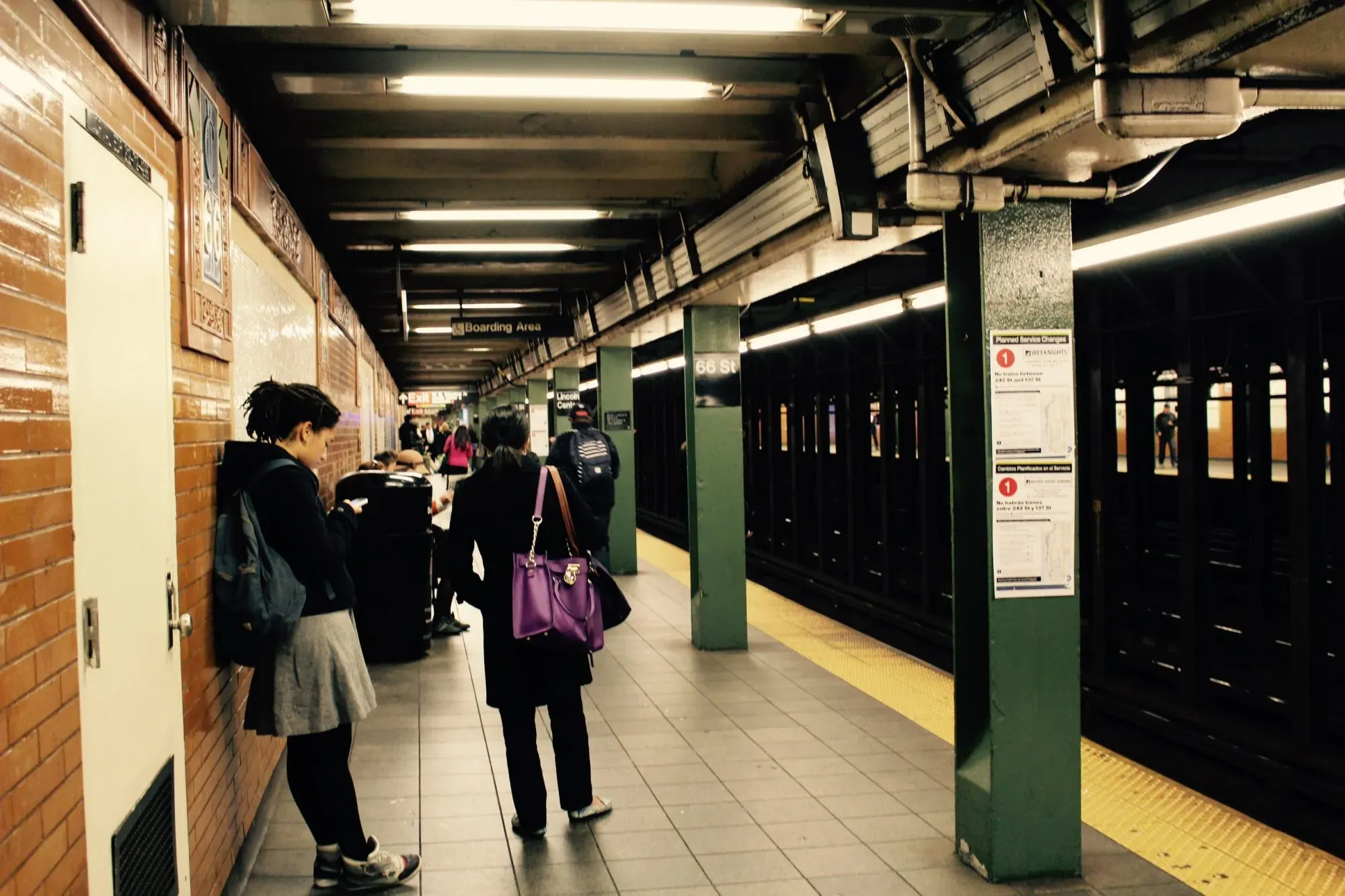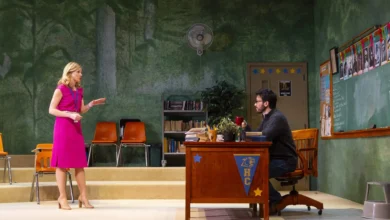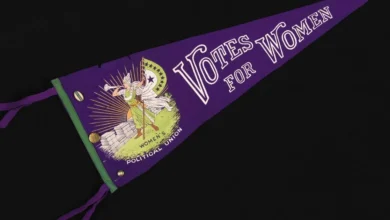NYC Subway Safety: Duffy’s Controversial Visit and Critique

When it comes to NYC subway safety, recent comments from U.S. Transportation Secretary Sean Duffy have sparked intense discussions. During a ride on the B train with Mayor Eric Adams, Duffy openly criticized the subway conditions, comparing the transit system to a homeless shelter and calling it unsafe. His remarks have raised concerns about subway crime in New York, with many residents demanding urgent improvements to ensure safer commutes. Furthermore, amidst discussions of MTA funding and congestion pricing NYC, Duffy indicated that federal support is contingent on significant changes being made to enhance both safety and reliability. As New Yorkers grapple with these challenges, the conversation around safe public transportation continues to grow more critical, reflecting a broader need for reform in the city’s transit infrastructure.
Exploring the topic of subway security in New York City reveals a myriad of concerns and responses from various stakeholders. Secretary Duffy’s recent statements highlight the perception of transit systems as unsafe environments, drawing comparisons to makeshift shelters. This issue is compounded by the persistent level of subway crime and the debates surrounding funding for the Metropolitan Transportation Authority (MTA), as well as ongoing discussions about congestion pricing in NYC. Public discourse surrounding the need for upgraded safety measures reflects a collective urgency among officials and citizens alike, prompting mayoral candidates and city leaders to propose diverse solutions aimed at improving the overall safety and reliability of the transit system. As this conversation evolves, it underscores the vital importance of ensuring a secure transportation network in one of the world’s largest urban centers.
The Current State of NYC Subway Safety
The state of safety within the NYC subway system has become a pressing concern for many New Yorkers. Recent remarks by U.S. Transportation Secretary Sean Duffy, who equated the subway’s environment to that of a homeless shelter, have reignited discussions about the adequacy of safety measures. Subway crime rates have been a focal point, prompting both transit authorities and city officials to reassess their strategies for protecting commuters. The Metropolitan Transportation Authority (MTA) has been working on initiatives to reduce crime in transit areas, but the pressure mounts as more scrutiny is applied to their effectiveness.
In light of Duffy’s comments, many have called for increased oversight and actionable plans to enhance subway safety. Mayoral candidates have proposed varying approaches to tackle this immediate issue, including increasing police presence and implementing new mental health response teams. Significant improvements in the subway system’s safety could not only restore public confidence but might also uplift ridership levels post-pandemic. Strengthening safety measures is essential for making the subway a viable and safe alternative for the city’s transportation needs.
The Debate on Congestion Pricing in NYC
The topic of congestion pricing has stirred controversy ever since its introduction as a potential solution to New York City’s traffic woes. Critics, including Sean Duffy, argue it unfairly penalizes drivers without providing reliable alternatives like a safer subway system. Duffy’s stance reflects a larger skepticism regarding how the revenue generated from congestion pricing will be utilized and whether it will effectively address the underlying problems of the city’s crowded streets and public transit inadequacies.
Supporters of congestion pricing maintain that it can lead to reduced traffic congestion and environmental benefits, which, in turn, can contribute to funding improvements for the MTA. They argue that the plan, backed by extensive studies, would not significantly impact low-income individuals who traditionally rely on public transit rather than owning cars. The ongoing debate underscores the tension between ensuring fair transportation access and developing infrastructure that meets the needs of New Yorkers.
Impact of Federal Scrutiny on MTA Funding
U.S. Transportation Secretary Sean Duffy’s visit to the NYC subway has highlighted the federal government’s role in the funding and future of the MTA. Duffy’s criticisms of the subway system, particularly its safety and cleanliness, have raised questions about federal funding allocations. He suggested that the federal government might withhold crucial financial support until significant improvements are made, which poses a challenge for the MTA amid ongoing efforts to enhance services.
Response from local officials indicates a proactive approach to addressing the concerns raised by Duffy, with calls for more transparency and enhanced strategies for improving subway conditions. The MTA has an uphill battle to prove that it can garner sufficient funding without compromising the necessity for immediate and effective changes. As the federal government factors into the funding equation, the MTA must navigate both political pressures and public perception.
What’s Being Done About Subway Crime in New York?
Efforts to combat subway crime have gained urgency, especially following statements from political leaders pointing to the need for improved safety measures. NYC Mayoral candidates have pushed diverse agendas aimed at tackling crime within the subway system, emphasizing solutions like increased police presence and more focused programs on homelessness and mental illness. This multifaceted approach recognizes that crime in the subway is often linked to larger social issues.
Public safety initiatives put forth by the MTA and political leaders require collaborative efforts from city and state agencies, including the NYPD. Recent statistics indicate a decline in subway crime rates, suggesting that measures taken may be beginning to yield positive results. However, continuous vigilance and innovative strategies will be necessary to maintain safety and keep crime rates low while ensuring commuters feel secure during their travels.
Public Reaction to Transportation Secretary’s Comments
Public response to Secretary Duffy’s remarks has sparked a debate among New Yorkers, with many expressing strong feelings about his comparison of the subway to a ‘homeless shelter.’ For some, this resonates with their personal experiences while riding the subway. Others argue that his comments are overly simplistic and do not reflect the improvements that have been made in subway safety and cleanliness. This dissonance depicts the complexities of public transport discussions and highlights the varied experiences of riders.
Many New Yorkers call for more investment in the subway system, urging officials, including Duffy, to not only criticize but also provide concrete plans and solutions to elevate subway conditions. The challenge lies in balancing the voices of detractors with those who have witnessed positive changes and wish to advocate for continued support. Federal involvement will play a crucial role in shaping the direction and future of New York’s subway system.
Connecting NYC Subway Improvements to Mental Health Resources
Several NYC mayoral candidates have proposed that addressing mental health issues is vital for improving subway conditions. Recognizing that a significant portion of subway safety concerns can be attributed to individuals facing mental health challenges, candidates advocate for increased funding to form dedicated mental health response teams. This initiative not only aims to improve safety but also strives to provide necessary support to vulnerable populations.
Efforts to integrate mental health resources into the subway system focus on creating an environment where both riders and individuals experiencing homelessness can feel safe and secure. Support programs have been launched to address the complex causes of homelessness and mental illness, indicating a holistic approach to enhancing subway safety. Collaborative efforts between city agencies and local organizations are essential in implementing sustainable and effective solutions.
The Future of NYC Transit: Funding and Infrastructure Needs
With calls for improved subway conditions, the future of NYC transit hinges on adequate funding and a clear vision for infrastructure enhancement. The city’s transportation system is at a critical juncture, where decisions made regarding investment and development could significantly impact public transit’s effectiveness for years to come. As Duffy’s visit underscored, federal funding can play a crucial role, but it requires a concerted effort by local leaders to lobby for these funds.
Understanding the needs of New Yorkers extends beyond simple fixes. The discourse around MTA funding involves comprehensively planning for long-term infrastructure projects, maintaining existing systems, and addressing immediate safety concerns. As transit planning continues, prioritizing these elements will be essential to ensuring that NYC can meet its growing transportation demands while remaining a safe place for all commuters.
Engaging the Community in Transit Safety Conversations
Increasing community engagement in discussions about subway safety can play a significant role in shaping public transit policies. Local leaders and organizations are championing initiatives that allow for community input regarding transit safety measures. This participatory approach not only ensures that the needs and concerns of New Yorkers are addressed but also builds trust in the initiatives being implemented by transit authorities.
Forums and town halls focused on safety can provide platforms for riders to voice their experiences and suggest improvements that could be made. This dialogue encourages a collaborative relationship between transit authorities and the community, evolving approaches to better meet the needs of those who utilize the subway daily. Engaging the public in these conversations paves the way for meaningful change, ensuring a safer and more reliable subway system.
Political Implications of Subway Condition Discussions
The dialogue around subway safety and investment in infrastructure inevitably has political implications, as illustrated by Secretary Duffy’s visit. His comments and critique of the transit system suggest a political landscape focused on accountability. The scrutiny placed on the MTA and New York officials reflects broader national conversations about infrastructure funding and urban transportation policy.
Politicians leveraging subway conditions to gain traction in public opinion must balance promises with actionable plans. As subway crime continues to be a pressing concern, how officials respond could shape their political futures. The prospect of upcoming elections further amplifies this urgency, prompting candidates to outline clear safety strategies while ensuring that they engage effectively with community concerns.
Frequently Asked Questions
What steps is NYC taking to improve subway safety amidst concerns raised by Transportation Secretary Duffy?
In response to safety concerns highlighted by U.S. Transportation Secretary Sean Duffy, NYC is implementing measures to enhance subway safety, including increasing the NYPD presence on public transit, forming mental health response teams, and targeting homelessness with supportive interventions. These efforts aim to address subway crime and provide a safer environment for commuters.
How does congestion pricing relate to NYC subway safety according to recent discussions?
Transportation Secretary Duffy’s criticism of the congestion pricing plan highlights its connection to NYC subway safety. He argues that charging for road usage without ensuring a safe and reliable subway alternative is unjust. NYC officials suggest that effective congestion pricing could generate funds to enhance subway infrastructure and safety, creating a more integrated transportation system.
What do recent numbers say about subway crime in NYC following increased safety measures?
Despite criticism from federal officials, recent reports indicate that subway crime in NYC has fallen by double digits due to the implementation of enhanced safety measures, including increased NYPD presence and targeted interventions for mental health and homelessness. These efforts have contributed to a growing ridership as safety improves.
What is the MTA’s stance on subway funding related to the criticisms from Duffy’s subway visit?
The MTA countered Secretary Duffy’s claims about subway safety and funding by inviting him to review their budget and highlighting the significant work that has been put into planning infrastructure improvements. They emphasize that federal funding can be secured through demonstrated progress in subway safety measures, which are a priority.
How are mayoral candidates addressing the issue of subway safety in New York City?
Mayoral candidates in NYC are prioritizing subway safety, proposing measures such as increasing NYPD deployment in transit areas, creating specialized mental health teams, and developing housing solutions for the homeless. Each candidate presents varying strategies reflecting the community’s demand for enhanced security in the subway system.
| Key Points | Details |
|---|---|
| Duffy’s Subway Ride | Transportation Secretary Sean Duffy rode the B train with NYC Mayor Eric Adams, criticizing the subway conditions. |
| Comments on Safety | Duffy called the subway unsafe, comparing it to a homeless shelter; threatened withholding federal funding for improvements. |
| Congestion Pricing Plan | Duffy criticized NYC’s congestion pricing plan, suggesting it is unfair to charge those already funding road usage through taxes. |
| NYPD & Crime Strategies | Mayoral candidates proposed various strategies for improving subway safety, including increased police presence and mental health initiatives. |
| MTA’s Response | MTA Chairman Janno Lieber countered Duffy’s comments, defending the city’s strategies and improvements in public safety. |
| Future Plans | Duffy’s visit included evaluations of NYC infrastructure, emphasizing the need for federal investment in deteriorating sites. |
Summary
NYC subway safety is a pressing concern highlighted by recent comments from U.S. Transportation Secretary Sean Duffy. On his subway tour, Duffy’s stark comparisons and criticisms reflect ongoing challenges faced by New Yorkers in ensuring safe travel. He called the conditions unsafe, similar to a homeless shelter, signaling a need for significant improvements and increased funding. The city’s leadership, including Mayor Eric Adams and MTA officials, have responded by emphasizing their ongoing efforts to enhance safety and security within the transit system, showcasing that while criticism is present, progress has been made in addressing crime and improving conditions for riders.




